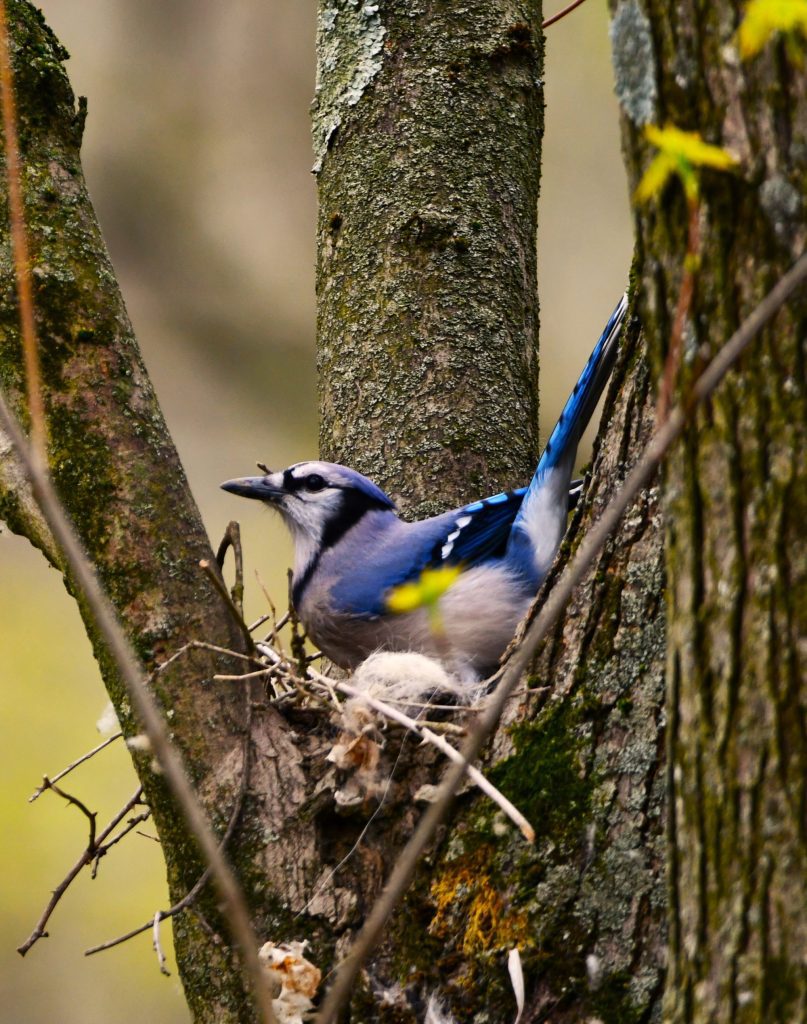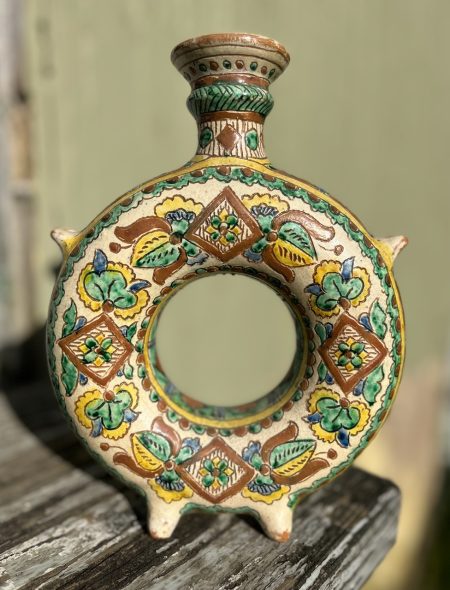It’s the time of year when birds are on a mission to build nests, offering birdwatchers a great opportunity. I recently noticed a pair of blue jays gathering materials to build a nest on one of our red maple trees near the garage and shed.
After observing the branches, I found the beginnings of a nest in a fork of branches on the tree trunk. I wondered about the jays' choice of location, as it was in a high-traffic area next to our driveway. Despite our family, dog, and vehicles passing by frequently, the birds kept collecting twigs, leaves, and horse hair for their nest.
I questioned whether our constant presence below their nest might cause the birds to move. However, they seemed determined to stay, having already put in a lot of effort into the nest.
I expect the birds to start laying eggs soon, typically in early May or June. The female blue jay will lay three to six blueish or light brown eggs, which will hatch after about 20 days of incubation by both parents. The fledglings will be ready to leave the nest about three weeks after hatching.
While we keep an eye on the progress of the blue jays, we also have a pair of Eastern phoebes building a nest near our house for the fourth year in a row. The location is close to the blue jays’ nest. We also have nesting boxes on our property, some of which are currently occupied by white-breasted nuthatches and house wrens.
We have several nesting boxes on our property, including some for bluebirds. While we’ve had some bluebirds inspecting them, they haven't nested in any. Currently, the boxes are occupied by white-breasted nuthatches and house wrens building their nests inside.
Three of the boxes that are placed in a row on our front porch are meant for wrens, and the box nearest to our front door has now become the new home for a pair of Carolina wrens. Carolina wrens are a bit bigger than house wrens and have more colorful markings, including a white chest and eyebrow stripe that the darker drab brown house wren does not have. However, house wrens are the more aggressive species and will not hesitate to force Carolina wrens out of any nesting box they want to use.
In previous years, Carolina wrens have ignored our nesting boxes and chosen to build their nests in the pockets of my fishing vest hanging unattended in our garage. During those years, I had to avoid using that particular piece of clothing until the baby wrens had left their vest nest. While robins typically build their nests in the trees near our house or even on the interlocking timber notches of our log home, one year a creative pair of robins built their nest in the basket of a hanging plant on the front porch, and successfully raised a brood of four young birds.
There are two wood duck nesting boxes situated along the banks of our backyard pond. In the past, both wood ducks and screech owls have lived in those boxes. It is likely that wood ducks are once again using one of those boxes this year, but I cannot be certain that they are currently nesting there.
Meanwhile, at our beach house by the canal in Ocean City, MD, I think my usual group of purple martins has already moved into the two martin houses we have there. Unfortunately, one or two of those nesting units are always taken over by invasive house sparrows. In Chester County, I put up a martin house behind the pond a few years ago. Even though it has not attracted a group of purple martins, it has been the preferred nesting place for a pair of tree swallows for the past three or four years.
Unlike purple martins, tree swallows do not live in groups and are quite solitary in their nesting habits. This means that only one of the twelve nesting compartments in the martin house is being used. Tree swallows are also quite aggressive, and if anyone gets too close to their home during nesting season, they will immediately swoop down and dive at the intruder to drive them away. Mockingbirds and Canada geese are also well known for this kind of aggressive, protective behavior around their nesting sites.
As the nesting season continues to reach its peak, I, like every other devoted birdwatcher, will be keeping my birdwatching senses alert in the hope of discovering more interesting bird nesting activities.
TROUT STOCKINGS THIS WEEK
The Pennsylvania Fish and Boat Commission plans to stock several of the local streams in our area this week: In Berks County – Maiden Creek, Ontelaunee Creek, Perkiomen Creek, Pine Creek (4/25), Swabia Creek 4/29. In Chester County – Beaver Creek, Buck Run, West Branch Brandywine Creek (4/24). In Delaware County – Darby Creek, Ithan Creek, Little Darby Creek (4/23), Chester Creek, Ridley Creek (4/25). In Montgomery County – Ungami Creek (4/23), East Branch Perkiomen Creek (4/24), Perkiomen /creek, Skippack Creek (4/25).
Tom Tatum writes about outdoor activities for the MediaNews Group. You can contact him at tatumt2@yahoo.com.









